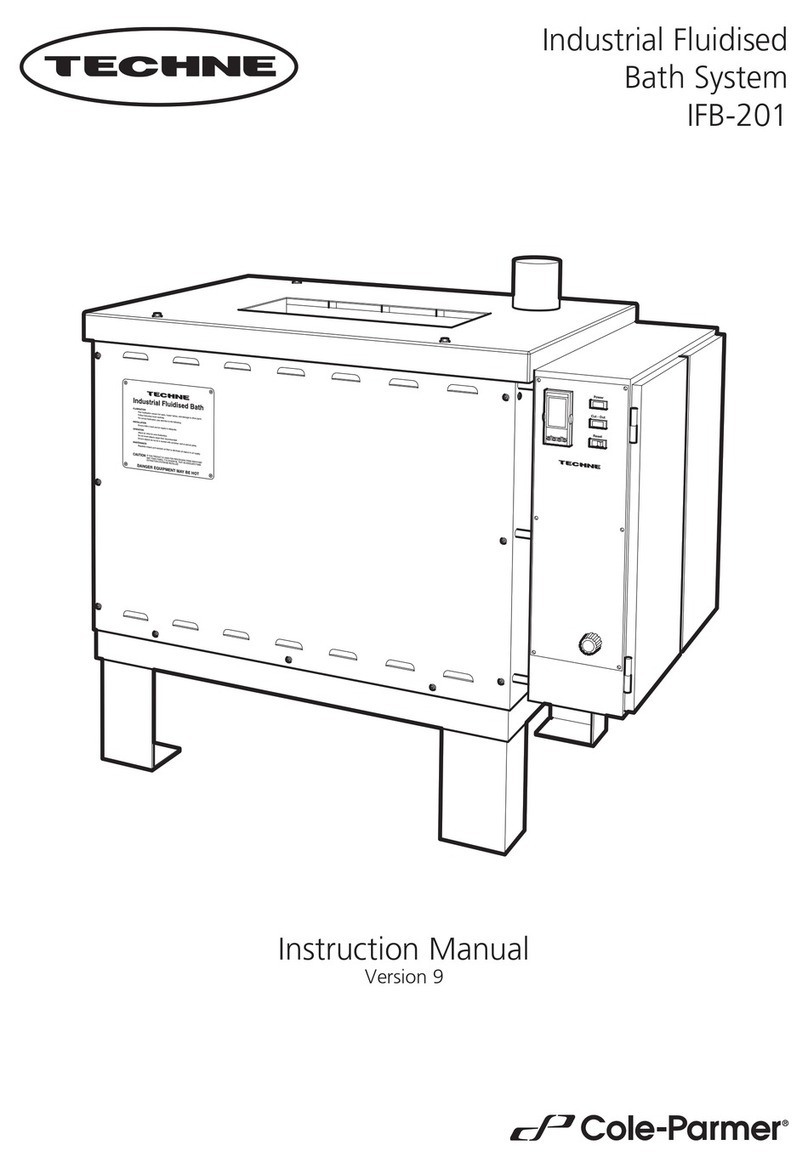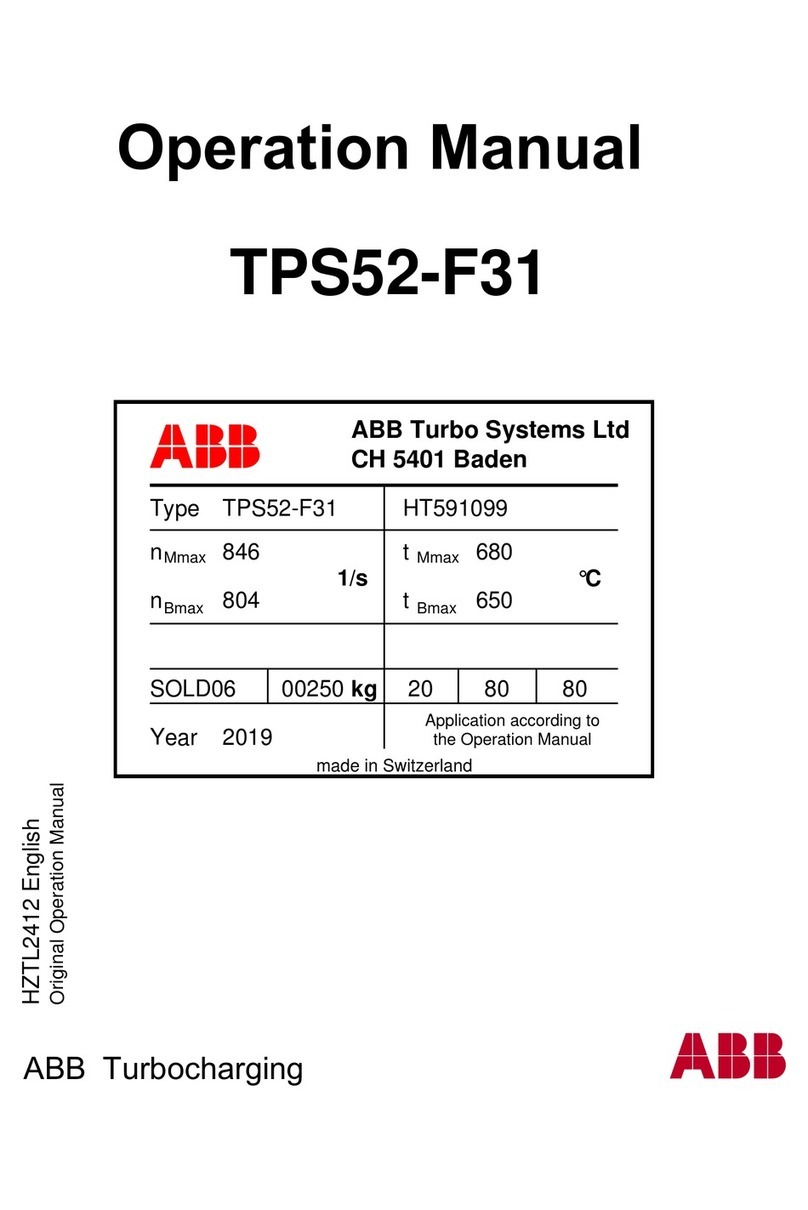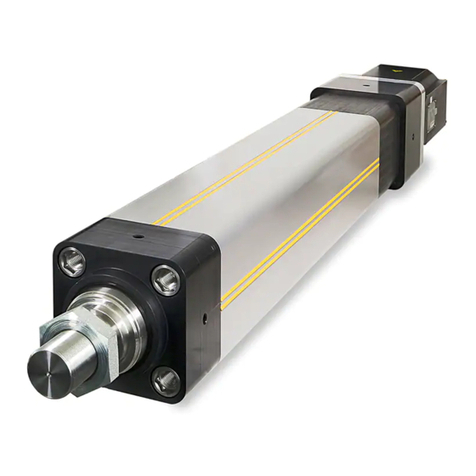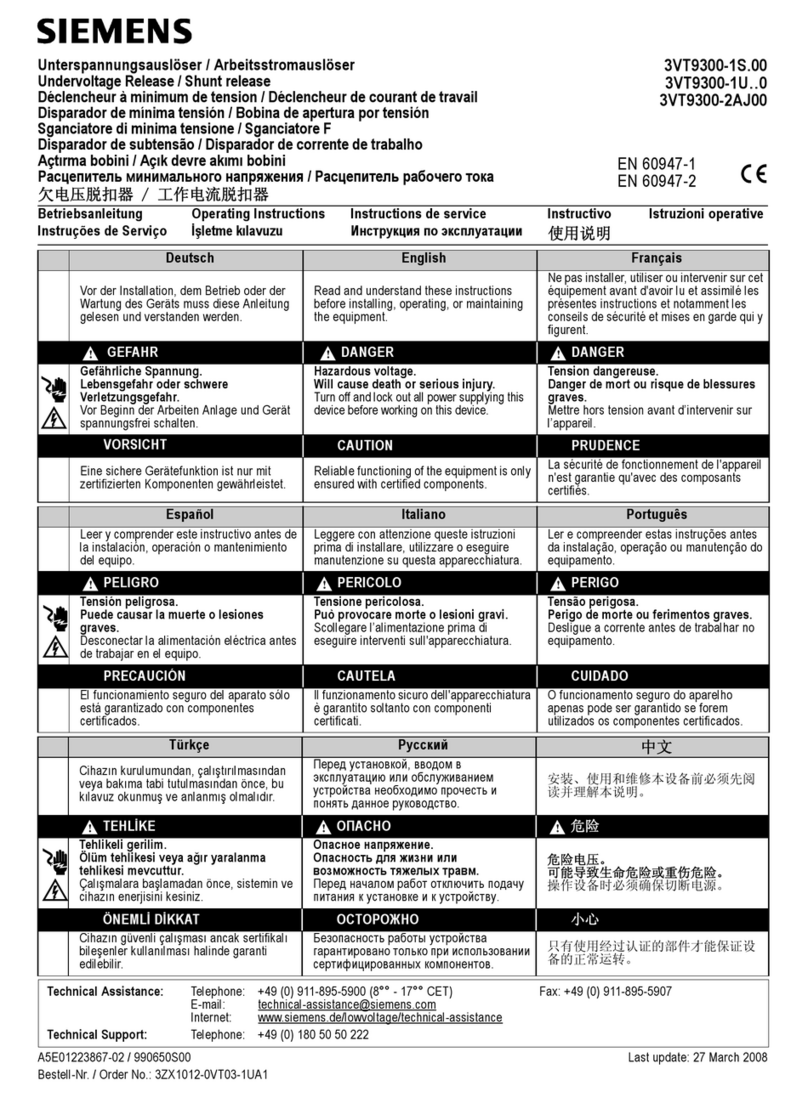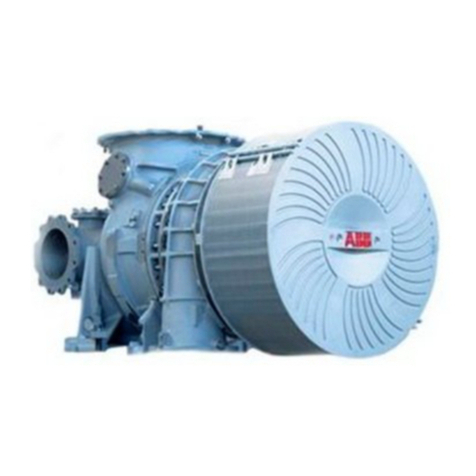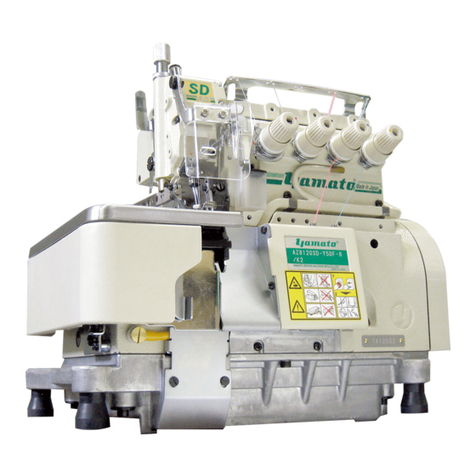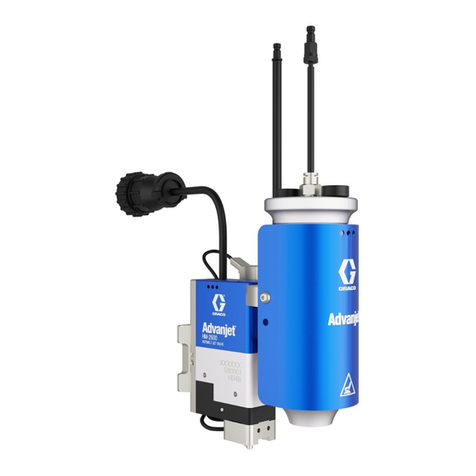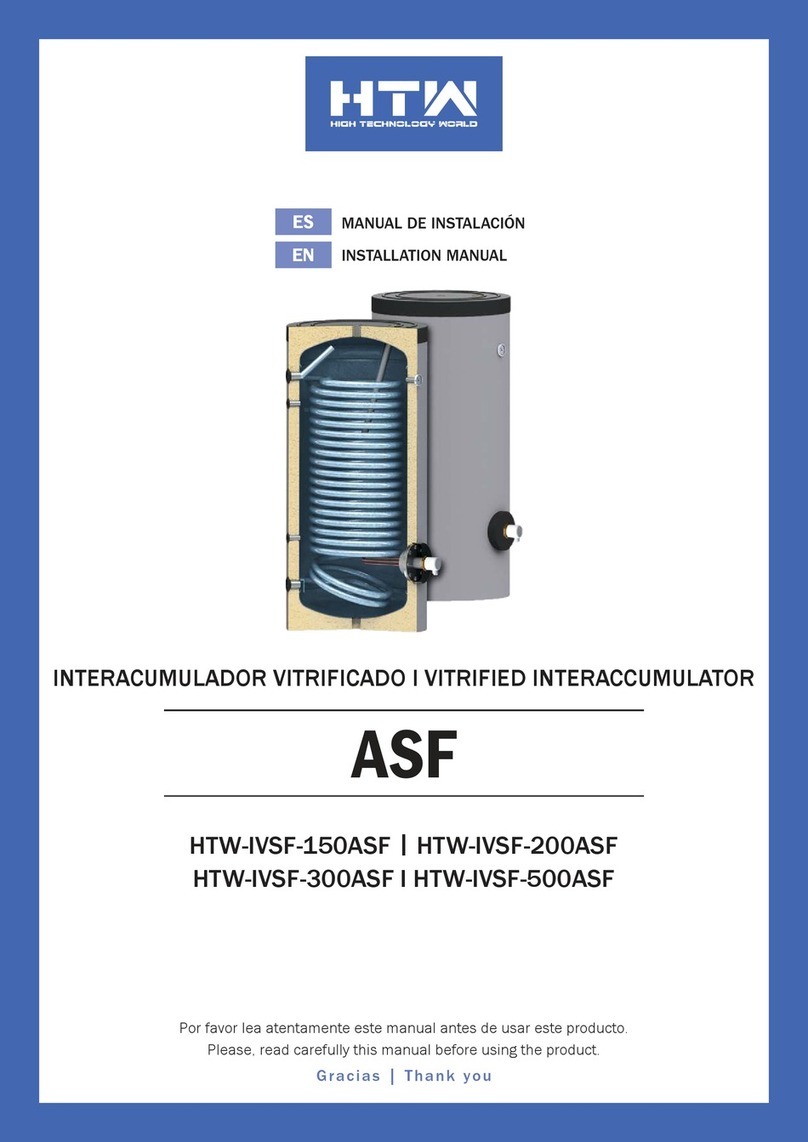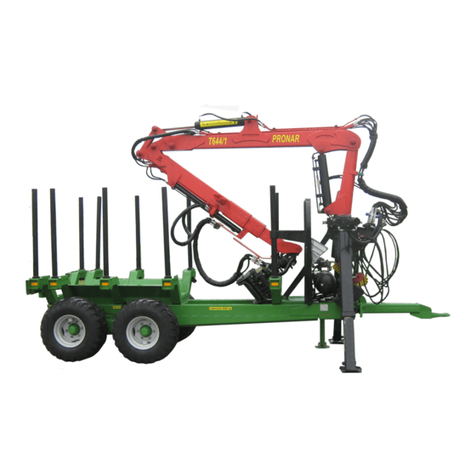Cole Parmer FSB-200 Series User manual

Cole-Parmer®
FSB-200 Series
Industrial Fluidised Sand Bath
Instruction Manual
7002661 Version 6

2
CONTENTS
IMPORTANT SUPPLEMENTARY SAFETY INFORMATION 3
GENERAL DESCRIPTION 4
BEFORE USE 5
SAFETY AND INSTALLATION 6
English 6
Français 8
Deutsch 10
Español 12
Italia 14
WARNING 16
PRINCIPLE OF OPERATION AND SAFETY FEATURES 17
DESCRIPTION OF COMPONENTS AND FRONT PANEL CONTROLS 18
INSTALLATION 19
Set-up 19
OPERATION 20
Start-Up 20
Air adjustment 20
Bath temperature 20
Extraction Air setup 20
Shut-Down 21
PID Temperature Controller 21
THE CLEANING PROCESS 22
FUME IGNITION 23
FUME EXTRACTION AND CLEANING 24
OPERATOR MAINTENANCE 25
Special maintenance procedures when burning off PVC or other halogenated polymers 26
FAULT FINDING 27
SERVICE, REPAIR AND TECHNICAL SUPPORT 28
TECHNICAL SPECIFICATION 29
REPLACEMENT PARTS 30
ACCESSORIES 30
DECLARATION OF CONFORMITY 31

3
IMPORTANT SUPPLEMENTARY SAFETY INFORMATION
Introduction
Cole-Parmer Industrial fluidised Baths (IFB) are safe and effective equipment when installed
and operated correctly in accordance with the user manual. However, if used incorrectly they can
pose a safety risk. Antylia Scientific Ltd have designed all models of fluidised baths to protect
operators from hazards but users should pay attention to the following points.
Symbols Defined
WARNING
Caution
FIRE
HAZARD
HOT
SURFACE
RISK OF
ELECTRIC
SHOCK
HEAVY OBJECT
2 PERSON LIFT
REQUIRED
EARTH
1.
Please read the Instruction Manual before installation and use.
2.
Some Cole-Parmer Fluidised Baths can heat up to 700°C. High temperatures are dangerous and can
cause serious burns to operators and ignite combustible material.
3.
Use care and wear protective gloves to protect hands and protective glasses to protect eyes.
4.
Do not put hot objects on or near combustible objects.
5.
Do not operate the unit close to inflammable liquids or gases.
6.
Do not place any liquid directly in the unit.
7.
Always ensure a suitable, adequate ventilation system is used when equipment is in use.
8.
Always install fireproof metal ducting with sufficient airflow where applicable.
Maintenance
1.
When performing maintenance, always disconnect from power supply and cool below 50°C.
2.
Antylia Scientific Ltd recommend regular cleaning of fluidised baths. Externally, wipe with a damp
soapy cloth. No abrasive cleaners should be used. Care should be taken to prevent any water entering
the unit.
3.
Regular internal and external inspection of extraction ducting is recommended to detect any damage
and ensure the internals are clean. Any build-up of particles or debris discovered in the extraction
ducting requires the ducting to be cleaned or replaced.
4.
In fluidised baths used for polymer burn-off, please regularly inspect fluidising medium, remove any
foreign debris and replace with clean fluidising medium as required.
5.
Never top-up a hot fluidised bath with cold fluidising medium. Always cool below 50°C first.
Please note:
1.
Please ensure an adequate risk assessment is performed before use of a fluidised bath.
2.
Please ensure the appropriate temperature is used for the application, always stay safely below the
combustion temperature of any material or sample in a fluidised bath.
3.
Fluidising airflow must be switched on before heating a fluidised bath and left operational until the
bath cools to below 50°C.
4.
Do not overfill fluidising media. When fluidised, the aluminium oxide level should be approximately
100mm (4”) from the top surface of the bath at your maximum operating temperature.
5.
In fluidised baths used for polymer burn-off, always remove excess polymer from sample.
6.
In applications where materials being treated produce acidic vapours during thermal decomposition, it
is recommended a fume scrubber is utilised to ensure fume emission from the plant conforms to local
regulations.
7.
If you have any questions, please contact cptechsupport@antylia.com.

4
GENERAL DESCRIPTION
The Cole-Parmer Industrial Fluidised Baths (IFB) FSB-200-5I and FSB-200-12I have been specially designed
for removing plastic residue from extruder tools, moulding machine tools and associated parts.
The fluidised bath employs the principle of fluidisation of a mass of finely divided inert particles by means
of an upward flow of gas. A state of fluidisation is achieved when the individual particles become
microscopically separated from each other by the moving gas. This “fluidised bed” of particles has unusual
properties which differ markedly from either those of the gas or of the solid particles. Instead, the fluidised
bed behaves remarkably like a liquid, exhibiting characteristics which generally attribute to a liquid state.
For example, the fluidised bed can be agitated and bubbled; it always seeks a common level; materials of
less density will float while those with densities greater than the equivalent fluidised bed density will sink;
and, most important, the heat transfer characteristics between the fluidised bed and a solid interface can
have an efficiency approaching that of an agitated liquid.
In addition, the fluidised solid phase has a most unusual physical behaviour, in that its basic characteristics
change only slightly over very large temperature ranges; it has no melting point and no boiling point. The
lowest temperature available is the liquefaction point of the gas used for fluidisation, while the highest
temperature level is the usable temperature of the inert solid. Various metal oxides with allowable
temperatures of over 1700°C are readily available. The metal oxide beds commonly used, (e.g. aluminium
oxide) are non-flammable, non-explosive and non-toxic.
The most commonly used fluidising gas is compressed air. It is important that it should be clean, dry, free
from oil and at a constant pressure. Any other inert gas, such as nitrogen, could be used for special
applications e.g. if a non-oxidising atmosphere is required, provided appropriate precautions are taken.
The unique characteristics of gas-fluidised particles is the relatively high rate of heat transfer which yields
highly isothermal conditions, as well as excellent heat transfer to solid surfaces. This characteristic is due to
the turbulent motion and rapid circulation rate of the solid particles in conjunction with the extremely high
solid-gas interface area. Therefore, even though gas-solid interfaces normally yield low heat transfer
coefficients and the solids normally have low thermal conductivities, the overall heat transfer characteristics
of fluidised particles approach those of a liquid.
The combination of excellent heat transfer characteristics and high heat capacity are ideal for attaining
rapid stabilisation at an isothermal condition.
Cole-Parmer Industrial Fluidised Baths use alundum - fused brown aluminium oxide - as the fluidising
medium. They have been designed to remove plastic residue from extruder and moulding machine tools,
paint build up from paint fixtures and carry out various heat treatment processes. When used for
burning plastic residues, the IFB’s should be installed with an adequate fume extraction system. An
extraction fan and fume extraction collar can be supplied.

5
BEFORE USE
Thank you for purchasing this Cole-Parmer product. To get the best performance from the equipment,
and for your own safety, please read these instructions carefully before use. If there is any doubt
relating to the proper use of this equipment, the staff at Antylia Scientific Ltd. or your supplier will be
happy to assist you.
UNPACKING
When unpacking the unit please ensure that the following have been removed from the packaging:
Part code
FSB-200-5I or FSB-200-12I
7002661
Item description
Industrial Fluidised Bath
Instruction manual
Eurotherm controller instructions
Please note that the aluminium oxide fluidising medium must be ordered separately:
Part code Item description
Brown/ALO Alundum - brown aluminium oxide, 25kg.
The FSB-200-5I requires 40kg of aluminium oxide and the FSB-200-12I, 73kg of aluminium oxide.
The user is advised to keep the original packaging in case the instrument ever needs to be returned for
service or repair. Antylia Scientific Ltd. accepts no responsibility for damage incurred unless the unit is
correctly packed and transported in its original packaging.
If the equipment is not used in the manner described in this manual and with accessories other than those
recommended by the manufacturer, the protection provided may be impaired.

6
SAFETY AND INSTALLATION
Please read all the information in this Instruction Manual before using the unit.
WARNING
HIGH TEMPERATURES ARE DANGEROUS: they can cause serious burns to operators and ignite
combustible material.
Antylia Scientific Ltd have taken great care in the design of these units to protect operators from
hazards, but operators should pay attention to the following points:
•
USE CARE AND WEAR PROTECTIVE GLOVES TO PROTECT HANDS AND SAFETY GLASSES TO
PROTECT EYES.
•
DO NOT use combustible substances near hot objects.
•
DO NOT operate the instrument in the vicinity of inflammable liquids or gases.
•
DO NOT place any liquid directly into the instrument.
•
At all times USE COMMON SENSE.
OPERATOR SAFETY
All operators of Cole-Parmer equipment must have available the relevant literature needed to ensure their
safety. It is important that only suitably trained personnel operate this equipment in accordance with the
instructions contained in this manual and with general safety standards and procedures. If the equipment
is used in a manner not specified by Antylia the protection provided by the equipment to the operator may
be impaired.
All Cole-Parmer units have been designed to conform to international safety requirements and are fitted
with an over-temperature cut-out. On some models, the cut-out is adjustable and should be set to
suit the application. On all other models the cut-out is pre-set to protect the unit.
If a safety problem should be encountered, switch off at the mains power supply.
INSTALLATION
Before connecting the instrument to the mains electricity supply, check the voltage against the
rating plate (located on the back of the unit). Please note that the unit must be earthed to
ensure proper electrical safety.
Connections
220V-240V
Live Brown
Neutral Blue
Earth Green/yellow
Note:
The FSB-200-5I and FSB-200-12I are classified as “Permanently Connected Equipment” and
should be connected to the electricity supply by a qualified electrician.
A suitable supply for the FSB-200-5I is rated at 4kW, 220-240V, 50/60Hz~ single phase.
A suitable supply for the FSB-200-12I is rated at 6kW, 220-240V, 50/60Hz~ single phase
The equipment is supplied with 2.5m of flexible, triple core, circular cable to the following specification:
4.0mm², to BS 6500 or equivalent and <HAR> or BASEC approved. Connection to the mains electrical
supply should be via a double pole 30mA Residual Current Breaker with Overcurrent protection (RCBO)
isolating circuit breaker switch with a continuous current carrying capacity of 30A at 250V and overcurrent
of 30A.
Do not switch on until the unit is fully installed.

7
ENVIRONMENTAL CONDITIONS
This equipment is designed to operate under the following conditions:
•
Indoor use
•
Use in a well-ventilated area
•
Ambient temperature range +5°C to +40°C
•
Altitude to 2000 m (6500 ft.)
•
Relative humidity 80%
•
Mains supply fluctuations not exceeding 10%
•
Overvoltage category II IEC60364-4-443
•
Pollution degree 2 IEC664
OPERATOR MAINTENANCE
NOTE: THAT THIS EQUIPMENT SHOULD ONLY BE DISMANTLED BY PROPERLY TRAINED PERSONNEL.
REMOVING THE SIDE, FRONT OR REAR PANELS EXPOSES POTENTIALLY LETHAL MAINS VOLTAGES.
THERE ARE NO OPERATOR MAINTAINABLE PARTS WITHIN THE EQUIPMENT.
In the unlikely event that you experience any problems with your unit which cannot easily be remedied,
you should contact your supplier and return the unit if necessary. Please include any details of the fault
observed and remember to return the unit in its original packing. Antylia Scientific ltd accept no
responsibility for damage to units which are not properly packed for shipping: if in
doubt, contact your supplier.
1.Cleaning
Before cleaning your unit ALWAYS disconnect it from the power supply and allow it to cool below 50°C.
Your unit can be cleaned by wiping with a damp soapy cloth. Care should be exercised to prevent water
from running inside the unit. Do not use abrasive cleaners.
2.Over-temperature cut-out
In the event of no heater power, check the mains plug and lead. Repeated operation of the cut-out
indicates a serious fault: you may need to return the unit to your supplier for repair.
3.Fuses
Your unit is protected by one or two fuses. These should only be changed by suitably qualified personnel.
If the fuses blow persistently, a serious fault is indicated and you may need to return the unit to your
supplier for repair.

8
SÉCURITÉ ET CONSIGNES D’INSTALLATION
Veuillez lire attentivement toutes les instructions de ce document avant d’utiliser l’appareil.
AVERTISSEMENT
DANGER DE TEMPERATURES ELEVEES: les opérateurs peuvent subir de graves brûlures et les matériaux
combustibles risquent de prendre feu.
Antylia Scientific Ltd a apporté un soin tout particulier à la conception de ces appareils de façon à
assurer une protection maximale des opérateurs, mais il est recommandé aux utilisateurs de porter une
attention spéciale aux points suivants :
•
UTILISEZ ET PORTEZ DES GANTS DE PROTECTION POUR PROTÉGER VOS MAINS ET DES
LUNETTES DE SÉCURITÉ POUR PROTÉGER VOS YEUX.
•
NE PAS poser d’objets chauds sur ou près de matériaux combustibles.
•
NE PAS utiliser l’appareil à proximité de liquides ou de gaz inflammables.
•
NE PAS verser de liquide directement dans l’appareil.
•
FAIRE TOUJOURS PREUVE DE BON SENS.
SÉCURITÉ DE L’OPÉRATEUR
Tous les utilisateurs de produits Cole-Parmer doivent avoir pris connaissance des manuels et
instructions nécessaires à la garantie de leur sécurité.
Important : cet appareil doit impérativement être manipulé par un personnel qualifié et utilisé selon les
instructions données dans ce document, en accord avec les normes et procédures de sécurité
générales. Dans le cas où cet appareil ne serait pas utilisé selon les consignes précisées par Cole-Parmer
Ltd, la protection pour l’utilisateur ne serait alors plus garantie.
Tous les appareils Cole-Parmer sont conçus pour répondre aux normes de sécurité internationales et sont
dotés d’un coupe-circuit en cas d’excès de température. Sur certains modèles, ce coupe-circuit est réglable
pour s’adapter à l’application désirée. Sur d’autres modèles, il est pré-réglé en usine pour assurer la
protection de l’appareil.
En cas de problèmes de sécurité, coupez l'alimentation secteur.
INSTALLATION
Avant de raccorder l’appareil à l’alimentation électrique sur secteur, vérifier la tension requise
indiquée sur la plaque d’identification (située au dos de l’appareil). Il est important que
l’appareil soit relié à la terre pour assurer la protection électrique requise.
Connexions
220V-240V
Phase Marron
Neutre Bleu
Terre Vert/jaune
Remarque : les modèles FSB-200-5I et FSB-200-12I sont classés en tant qu'« Équipement branché en
permanence » et devraient être raccordés au réseau électrique par un électricien qualifié.
Une alimentation électrique adaptée au modèle FSB-200-5I correspond à 4 kW, 220-240 V, 50/60 Hz~
monophasé. Une alimentation électrique adaptée au modèle FSB-200-12I correspond à 6 kW, 220-240 V,
50/60 Hz~ monophasé.
L'équipement est doté d’un câble circulaire flexible à trois conducteurs, de 2,5 m de long, répondant aux
spécifications suivantes : 4,0 mm², à BS 6500 ou équivalent et approuvé par <HAR> ou BASEC. La connex-
ion au réseau électrique devrait être faite par le biais d'un disjoncteur à courant continu résiduel bipolaire
de 30 mA, doté d’un système de protection de surintensité (RCBO), un disjoncteur isolant avec
une capacité de transport de courant de 30 A à 250 V et surintensité de courant de 30 A.
Ne pas allumer avant que l'unité soit complètement installée.

9
CONDITIONS ENVIRONNEMENTALES
Cet appareil est conçu pour fonctionner dans les conditions suivantes:
•
Pour un usage intérieur seulement
•
Utilisation dans un lieu correctement ventilé
•
Température ambiante +5°C à +40°C
•
Altitude inférieure à 2000m
•
Humidité relative ne dépassant pas 80%
•
Fluctuations de l’alimentation n’excédant pas 10% de la valeur nominale
•
Catégorie II IEC 60364-4-443 de surtension
•
Degré de pollution 2 IEC664
ENTRETIEN UTILISATEUR
IMPORTANT: CET APPAREIL NE PEUT ETRE DEMONTE QUE PAR DU PERSONNEL QUALIFIE.
LORSQUE LES PANNEAUX AVANT, ARRIERE ET LATERAUX SONT DEMONTES, L’OPERATEUR EST EXPOSE
A DES TENSIONS QUI PEUVENT ETRE MORTELLES.
CET APPAREIL NE CONTIENT AUCUN ELEMENT QUI DEMANDE UN ENTRETIEN DE LA PART DE
L’UTILISATEUR.
Dans le cas peu probable où votre appareil présente un défaut de fonctionnement auquel il est difficile de
remédier, il est alors préférable de contacter votre fournisseur et, le cas échéant, de renvoyer le matériel.
Veuillez inclure une description détaillée du problème constaté et retourner l’appareil dans son emballage
d’origine. Antylia Scientific Ltd ne sera pas tenu responsable des dommages subis par tout appareil don’t
l’emballage est inadéquat pour le transport. Pour plus de sûreté, contactez votre fournisseur.
1.Nettoyage
Avant de nettoyer l’appareil, assurez-vous TOUJOURS que le câble d’alimentation est déconnecté et
laissez la température redescendre en dessous de 50°C.
Utilisez un chiffon imprégné d’eau savonneuse pour nettoyer l’appareil. Veillez à ne pas introduire d’eau
dans l’appareil. N’utilisez pas de produits abrasifs.
2.Coupe-circuit d’excès de température
•
En l’absence de puissance de chauffe, vérifiez la prise et le câble d’alimentation puis réglez la commande
du coupe-circuit (si votre appareil est doté de ce mécanisme).
•
Si la sécurité se déclenche trop souvent, il s’agit d’un problème plus sérieux. Nous vous conseillons
dansce cas de prendre contact avec votre fournisseur pour réparation.
3.Fusibles
La protection de l’appareil est assurée par un ou deux fusibles dont le remplacement ne peut être effectué
que par un personnel qualifié.
Si les fusibles sautent sans arrêt, il s’agit d’un problème sérieux. Nous vous conseillons dans ce cas de
rendre contact avec votre fournisseur pour réparation.

10
SICHERHEITS - UND INSTALLATIONSINFORMATIONEN
Bitte lesen Sie diese Bedienungsanleitung komplett bevor Sie dieses Gerät benutzen.
WARNUNG
HOHE TEMPERATUREN SIND GEFÄHRLICH: sie können dem Bediener ernsthafte Verletzungen zufügen
und brennbare Materialien können sich leicht entzünden.
Antylia Scientific Ltd hat bei der Konstruktion dieses Gerätes sehr darauf geachtet, daß der Bediener
vor Gefahren geschützt ist. Dennoch sollten Sie auf die folgenden Punkte achten:
•
TRAGEN SIE SCHUTZHANDSCHUHE ZUM SCHUTZ IHRER HÄNDE UND SETZEN SIE EINE
AUGENSCHUTZBRILLE AUF.
•
KEINE brennbaren Stoffe in der Nähe heißer Gegenstände verwenden.
•
Das Gerät NICHT in der Nähe entzündlicher Flüssigkeiten oder Gase betreiben.
•
Flüssigkeiten NICHT direkt auf das Gerät auftragen.
•
Benutzen Sie immer den normalen Menschenverstand.
SICHERHEIT DES ANWENDERS
Alle Benutzer von Cole-Parmer Geräten müssen Zugang zu der entsprechenden Literatur haben, um
ihre Sicherheit zu gewähren.
Es ist wichtig, daß diese Geräte nur von entsprechend geschultem Personal betrieben werden, das die in
dieser Gebrauchsanweisung enthaltenen Maßnahmen und allgemeine Sicherheitsbestimmungen und
-vorkehrungen beachtet. Wenn das Gerät anders eingesetzt wird als vom Hersteller empfohlen, kann dies
die persönliche Sicherheit des Anwenders beeinträchtigen. Die Geräte von Cole-Parmer entsprechen den
interna-tionalen Sicherheitsbestimmungen und sind mit einem automatischen Übertemperaturabschalter
ausges-tattet. Bei einigen Modellen ist der Übertemperaturabschalter verstellbar und sollte je nach
Anwendung entsprechend eingestellt werden. Bei allen anderen Modellen ist der
Temperaturschutz voreingestellt um Schäden am Gerät zu vermeiden.
Sollte ein Sicherheitsproblem auftreten, schalten Sie die Hauptstromversorgung aus.
INSTALLATION
Vor dem Anschluss bitte kontrollieren, ob die Stromversorgung den Angaben auf dem Typenschild
auf der Geräterückseite) entspricht. Um die elektrische Sicherheit zu gewährleisten, muss
dieses Gerät geerdet werden.
Anschluss 220V-240V
Phase Braun
Neutral Blau
Erde Grün/Gelb
Hinweis:
FSB-200-5I und FSB-200-12I sind als „Permanent angeschlossene Geräte“ eingestuft und sollten
von einem qualifizierten Elektriker an den Stromanschluss angeschlossen werden.
Die geeignete Stromversorgung für das Gerät FSB-200-5I beträgt 4kW, 220-240V, 50/60Hz~, einphasig.
Die geeignete Stromversorgung für das Gerät FSB-200-12I beträgt 6kW, 220-240V, 50/60Hz~, einphasig.
Das Gerät wird mit einem 2,5 m langen flexiblen, dreiadrigen Rundkabel mit folgenden Spezifikationen
betrieben: 4,0 mm², BS 6500 oder gleichwertig und <HAR>- oder BASEC-zertifiziert. Der Anschluss an das
Stromnetz sollte über einen doppelpoligen 30 mA Fehlerstrom-Schutzschalter mit Überstromauslöser
(RCBO) und einen Trennschalter mit einer kontinuierlichen Strombelastbarkeit von 30 A bei 250 V und
Überstrom von 30 A erfolgen.
Schalten Sie das Gerät erst ein, wenn das Gerät vollständig installiert ist.

11
UMWELTBEDINGUNGEN
Dieses Gerät ist für den Betrieb unter folgenden Bedingungen ausgelegt:
•
Nur für den Betrieb in Innenräumen
•
Betrieb in gut belüfteten Räumen
•
Umgebungstemperaturbereich: +5°C bis +40°C
•
Höhenlagen bis 2000 m
•
Relative Luftfeuchtigkeit maximal 80 %
•
Schwankungen in der Stromversorgung maximal 10 %
•
Überspannungskategorie II IEC60364-4-443
•
Verschmutzungsgrad 2 IEC664
WARTUNG DURCH DEN BEDIENER
BEACHTEN SIE, DASS DIESES GERÄT NUR VON TECHNISCHEN FACHKRÄFTEN GEÖFFNET UND DEMONTIERT
WERDEN DARF.
DURCH ENTFERNEN DES GERÄUSES ODER GEHÄUSETEILEN SIND BAUTEILE MIT LEBENGEFÄHRLICHEN
SPANNUNGEN FREI ZUGÄNGLICH.
IM INNERN DES GERÄTES BEFINDEN SICH KEINE TEILE, DIE VOM ANWENDER GEWARTET WERDEN
MÜSSEN.
Falls Ihr Gerät nicht ordnungsgemäß arbeitet, wenden Sie sich an Ihren Lieferanten oder senden Sie das Gerät
wenn nötig zurück. Fügen Sie eine genaue Beschreibung des Defektes bei. Verpacken Sie das Gerät möglichst im
Originalkarton. Bitte beachten Sie, daß Antylia Scientific Ltd und thermo-DUX keine Haftung bei
Transportschäden aufgrund unzureichender Verpackung übernehmen. Setzen Sie sich im Zweifelsfall
mit Ihrem Lieferanten in Verbindung.
1.Reinigen
Bevor Sie Ihr Gerät reinigen, sollten Sie
•
zuerst den Netzstecker ziehen
•
das Gerät unter 50°C abkühlen lassen.
Ein feuchtes Tuch mit Seifenlösung reinigt Ihr Gerät am besten. Achten Sie darauf, daß kein Wasser in das Gerät
gelangt. Verwenden Sie keine Scheuermittel.
2.Übertemperaturabschalter
•
Der Übertemperaturschutz ist ein empfindliches mechanisches Teil. Schon eine Erschütterung kann
diesenauslösen.
•
Falls die Heizung nicht funktioniert, überprüfen Sie zuerst Netzstecker und Kabel. Setzen Sie dann
denÜbertemperaturabschalter (an der Rückseite des Gerätes) wieder zurück, indem Sie den roten Knopf
einmalbis zum Anschlag drücken.
•
Wenn der Übertemperaturabschalter wiederholt auslöst, liegt ein größerer Defekt vor. Das Gerät mußzur
Reparatur an Ihren Lieferanten eingesandt werden.
3.Sicherungen
Die Stromzuleitung ist durch ein oder zwei Sicherungen geschützt. Diese sollten nur durch qualifiziertes Fachper-
sonal ausgetauscht werden. Wenn die Sicherung wiederholt durchbrennt, liegt ein größerer Defekt vor.
Das Gerät muß zur Reparatur an Ihren Lieferanten eingesandt werden.

12
INFORMACIÓN DE SEGURIDAD E INSTALACIÓN
Le rogamos lea cuidadosamente la información contenida en este folleto antes de manipular el aparato.
AVISO
LAS TEMPERATURAS ELEVADAS SON PELIGROSAS: pueden causarle graves quemaduras y provocarfuego
en materiales combustibles.
Antylia Scientific Ltd ha puesto gran cuidado en el diseño de estos aparatos para proteger al usuario
de cualquier peligro; aún así se deberá prestar atención a los siguientes puntos:
•
UTILIZAR CON PRECAUCIÓN Y CON GUANTES PROTECTORES PARA PROTEGER LAS MANOS
Y GAFAS DE SEGURIDAD PARA PROTEGER LOS OJOS.
•
NO coloque objetos calientes encima o cerca de objetos combustibles;
•
NO maneje el aparato cerca de líquidos inflamables o gases;
•
NO introduzca ningún líquido directamente en el aparato;
•
UTILICE EL SENTIDO COMUN en todo momento.
SEGURIDAD DEL USUARIO
Todos los usuarios de equipos Cole-Parmer deben disponer de la información necesaria para asegurar su
seguridad.
De acuerdo con las instrucciones contenidas en este manual y con las normas y procedimientos generals de
seguridad, es muy importante que sólo personal debidamente capacitado opere estos aparatos. De no
ser así, la protección que el equipo le proporciona al usuario puede verse reducida.
Todos los equipos Cole-Parmer han sido diseñados para cumplir con los requisitos internacionales de
seguridad y traen incorporados un sistema de desconexión en caso de sobretemperatura. En algunos
modelos el sistema de desconexión es variable, lo que le permite elegir la temperatura según sus
necesidades. En otros, el sistema de desconexión viene ya ajustado para evitar daños en el equipo.
Si encuentra un problema de seguridad, desconecte el dispositivo de la red eléctrica.
INSTALACIÓN
Antes de conectar el instrumento al suministro eléctrico, compruebe que el voltaj coincida
con el indicado en la placa de régimen (situada en la parte trasera de la unidad). El instrumento
debe disponer de una toma de tierra para garantizar la seguridad eléctrica adecuada.
Conexión
220V-240V
Con corriente Marrón
Neutro Azul
Toma de tierra Verde/amarillo
Nota: El FSB-200-5I y el FSB-200-12I tienen la clasificación de “Equipo Permanentemente Conectado” y
deben ser conectados a la red eléctrica por un electricista cualificado.
Un suministro apto para el FSB-200-5I tiene una calificación de 4 kW, 220-240 V, 50/60 Hz~
monofase. Un suministro apto para el FSB-200-12I tiene una calificación de 6 kW, 220-240 V, 50/60
Hz~ monofase.
El equipo cuenta con un cable circular flexible de triple núcleo de 2,5 m con la siguiente especificación:
4,0 mm², conforme a BS 6500 o equivalente y <HAR> o aprobado por el BASEC. La conexión a la red
eléctri-ca debe ser a través de un disyuntor por corriente diferencial con protección de sobrevoltaje (RCBO)
doble polo de 30 mA con una capacidad de conducción de corriente continua de 30 A a 250 V y
sobrevoltaje de 30 A.
No conectar hasta que la unidad esté totalmente instalada.

13
CONDICIONES AMBIENTALES
Este equipo se ha diseñado para funcionar en las condiciones siguientes:
•
Sólo para uso en interior
•
Se debe utilizar en un área bien ventilada
•
Rango de temperatura ambiente: de +5°C a +40°C
•
Altitud: hasta 2000 m
•
Humedad relativa: inferior al 80%
•
Fluctuación de la alimentación eléctrica: inferior al 10%
•
Categoría de sobretensión II: según IEC 60364-4-443
•
Grado de contaminación: 2 IEC664
MANTENIMIENTO
ESTE APARATO DEBE SER DESMONTADO SOLO Y EXCLUSIVAMENTE POR PERSONAL DEBIDAMENTE
CAPACITADO.
EL RETIRAR LOS PANELES LATERALES, FRONTALES O TRASEROS SUPONE DEJAR AL DESCUBIERTO
TENSION DE LA RED PELIGROSA.
EL EQUIPO NO CONSTA DE NINGUNA PIEZA DE CUYO MANTENIMIENTO SE PUEDA ENCARGAR EL
USUARIO.
En el caso improbable de que experimentara algún problema con su aparato que no pudiera resolver con
facilidad, debería ponerse en contacto con su proveedor y devolverlo si fuera necesario. Indique de forma
detallada todos los defectos que haya notado y devuelva el equipo en su embalaje original. Antylia
Scientific Ltd no aceptará responsabilidad alguna por daños causados en equipos que no estuvieran
debidamente embalados para su envío; si tuviera alguna duda, póngase en contacto con su proveedor.
1.Limpieza
Antes de limpiar su aparato, desconéctelo SIEMPRE de la fuente de alimentación y permita que se enfríe
por debajo de los 50°C.
Este aparato se puede limpiar pasándole un paño húmedo enjabonado. Hágalo con cuidado parae evitar
que caiga agua dentro del mismo. No utilice limpiadores abrasivos.
2.Desconexión en caso de sobretemperaturas
El sistema de desconexión en caso de sobretemperaturas es un dispositivo mecánico sensible (una sacudida
mecánica podría desconectarlo).
•
Si el calefactor no recibiera alimentación, compruebe el enchufe y el cable de la toma de corriente;
acontinuación vuelva a ajustar el control del dispositivo (si su equipo lo lleva montado).
•
Una desconexión repetida indicaría una avería grave; puede que tenga que devolverle el aparato a
suproveedor para su reparación.
3.Fusibles
Su aparato está protegido por uno o dos fusibles. Sólo deben cambiarlos personal debidamente capacitado.
Si los fusibles se fundieran repetidamente, esto indicaría una avería grave y puede que tuviera que devolverle
el aparato a su proveedor para su reparación.

14
INFORMAZIONI SULLA SICUREZZA E L'INSTALLAZIONE
Prima di utilizzare l’apparecchio, leggere tutte le informazioni contenute in questo manuale.
ATTENZIONE
Le alte temperature sono pericolose: possono causare ustioni gravi all’utilizzatore e possono causare la
combustione di materiale infiammabile. La Antylia Scientific Ltd ha posto particolare cura nel
progettare questo strumento, al fine di proteggere gli operatori da eventuali pericoli, ma gli
utilizzatori devono prestare attenzione ai seguenti punti::
•
USARE CON PRUDENZA E INDOSSARE GUANTI PROTETTIVI PER PROTEGGERE LE MANI E
OCCHIALI DI SICUREZZA PER PROTEGGERE GLI OCCHI.
•
NON usare sostanze combustibili vicino ad oggetti caldi
•
NON mettere in funzione lo strumento nei pressi di liquidi o gas infiammabili
•
NON collocare alcun tipo di liquido direttamente nello strumento.
•
In ogni caso Usare Buon Senso.
SICUREZZA PER L’UTILIZZATORE
Il personale che utilizza l’apparecchiatura Cole-Parmer deve avere a disposizione la documentazione
necessaria al fine di assicurare la loro incolumità.
È importante che solo personale adeguatamente addestrato utilizzi questo apparecchio, in conformità alle
istruzioni contenute in questo manuale e nel rispetto delle normative e procedure generali di sicurezza. Se
l’apparecchio è utilizzato in modo non specificato da Antylia Scientific Ltd, la protezione fornita
dall’apparecchiatura all’utilizzatore potrebbe essere a rischio.
Tutte le unità Cole-Parmer sono state progettate in conformità ai requisiti internazionali di sicurezza e
sono equipaggiate con un interruttore anti surriscaldamento. Su alcuni modelli, l’interruttore è
regolabile e dovrebbe essere impostato secondo l’utilizzo. In tutti gli altri modelli l’interruttore è
preregolato per proteggere l’unità.
Se si dovesse verificare un problema di sicurezza, spegnere l'alimentazione generale.
INSTALLAZIONE
Prima di collegare lo strumento all'alimentazione elettrica di rete, controllare la tensione
confrontandola con la targhetta riportante i valori nominali (si trova sul retro dell'unità).
Notare che al fine di garantire la corretta sicurezza elettrica, occorre che l'unità sia
messa a terra.
Connessione
220V-240V
Sotto tensione Marrone
Neutro Blu
Terra Verde/giallo
Attenzione:
FSB-200-5I e FSB-200-12I sono classificati come "Apparecchiature Collegate
Permanentemente" e dovrebbero essere collegati all’impianto elettrico da un elettricista qualificato.
L'alimentazione adeguata per l'IFB-51 è indicata come monofase a 4kW, 220-240V, 50/60Hz~.
L'alimentazione adeguata per l'IFB-52 è indicata come monofase a 6kW, 220-240V, 50/60Hz~.
L'attrezzatura viene fornita con 2,5 m di cavo flessibile, tripolare e a sezione circolare, secondo le seguenti
specifiche: 4,0mm², conforme a BS 6500 o equivalenti e approvato da <HAR> o BASEC. Il collegamento
all'alimentazione generale dovrebbe essere effettuato tramite un interruttore differenziale bipolare da
30mA con sganciatore di sovracorrente isolante (RCBO) con capacità di trasporto di corrente continua di
30A a 250V e sovracorrente di 30A.
Non accendere fino a quando l'unità non sia stata completamente installata.

15
ENVIRONMENTAL CONDITIONS
Condizioni di esercizio previste:
•
Solo per uso in ambienti chiusi
•
Usare in ambienti ben ventilati
•
Temperatura ambiente da +5°C a +40°C
•
Altitudine fino a 2000 m
•
Umidità relativa non superiore all’80%
•
Oscillazione dell’alimentazione elettrica non superiore al 10%
•
Categoria di sovratensione II IEC60364-4-443
•
Grado di inquinamento 2 IEC664
MANUTENZIONE
QUESTO APPARECCHIO DOVRÀ ESSERE APERTO ESCLUSIVAMENTE DA PERSONALE ADEGUATAMENTE
ADDESTRATO.
LA RIMOZIONE DEI PANNELLI LATERALI, FRONTALI O POSTERIORI PUÒ ESPORRE POTENZIALMENTE A
VOLTAGGI DI CORRENTE LETALI.
ALL’INTERNO DELL’APPARECCHIO NON CI SONO PARTI MANUTENIBILI DA PARTE DELL’UTILIZZATORE.
Nell’eventualità che si riscontri un problema con l’apparecchio che non può essere facilmente risolto, si
dovrà contattare il proprio fornitore e restituire, se necessario, l’apparecchio. Si prega di specificare nel
dettaglio i difetti riscontrati e di ricordare di restituire l’apparecchio nel suo involucro originale. La Antylia
Scientific Ltd non si fa carico di alcuna responsabilità per danni subiti dall’apparecchio che non sia stato
propriamente imballato per il trasporto; in caso di dubbio, rivolgersi al fornitore.
1.Pulizia
Prima di pulire il vostro apparecchio, disconnettere sempre la presa di alimentazione e lasciare raffreddare
sotto i 50°C. Questo apparecchio può essere pulito passando un panno inumidito con sapone. Si deve
prestare attenzione onde prevenire l’ingresso dell’acqua all’interno dell’apparecchio. Non utilizzare per la
pulizia sostanze abrasive.
2.Disconnessione in caso di surriscaldamento
In caso di non funzionamento dell’apparecchio, controllare la spina elettrica e il relativo cavo collegati alla
rete. Ripetute interruzioni del funzionamento dell’apparecchio indicano un serio malfunzionamento: in
questo caso restituire l’apparecchio al fornitore per la riparazione.
3.Fusibili
L’apparecchio è protetto da uno o due fusibili. Questi dovrebbero essere sostituiti solo da personale
qualificato. Se i fusibili si bruciano frequentemente ciò indica un malfunzionamento serio e in
questo caso si consiglia di contattare il fornitore per le riparazioni.

16
WARNING
Poor fluidisation causes hot spots, heater failure and damage to other parts. Follow this Instruction Manual
carefully. For correct fluidisation, pay attention to the following:
INSTALLATION
•
Ensure the bath is level and air supply is adequate.
OPERATION
•
Adjust air valve for even fluidisation.
•
Do not insert objects larger than recommended.
•
Ensure objects do not lie in contact with container wall or porous plate. Sample buckets are available.
MAINTENANCE
•
Regularly inspect and maintain the air filter to eliminate oil vapour in the air supply.
ALUMINIUM OXIDE
•
Before handling the aluminium oxide, consult the MSDS for safe handling. Contact
cptechsupport@antylia.com if you require a copy.
•
Aluminium oxide is non-hazardous but dust may irritate the eyes and the respiratory system and cause
skin irritation.
•
Provide appropriate exhaust ventilation at places where dust is formed.
•
For storage: protect from moisture. Avoid dust formation. Keep container tightly closed. Store in a
well-ventilated place. Guard against dust accumulation of this material.
•
Wear correct PPE whilst handling the aluminium oxide material. Wear safety glasses with side shields,
appropriate chemical resistant gloves and suitable protective clothing.
•
Should the fluidised bath be stored for a long period under damp or humid conditions, moisture may
be absorbed by the aluminium oxide which is hydroscopic. To avoid violent fluidisation which occurs
when damp aluminium oxide is heated above 100°C, operate the bath for a period of approximately
8 hours at 90°C prior to operation at elevated temperatures.
•
NEVER ADD COLD OR DAMP ALUMINIUM OXIDE TO A HOT BATH AS THIS WILL ALSO CAUSE VIOLENT
FLUIDISATION WHICH CAN BE DANGEROUS. Allow the bath to cool then add the fresh aluminium
oxide. If this fresh aluminium oxide is a large portion of the charge, then dry the whole charge as
above.
FUME EXTRACTION
•
When used for processing items which may emit toxic or inflammable fumes, it is essential that an
adequate fume extraction system be installed. The extraction system must be correctly sized to ensure
that any toxic fumes are removed from the working environment.
•
To eliminate the risk of spontaneous ignition, the concentration of inflammable fumes above the bath
and within the exhaust duct work must be kept below the lower explosive limit. See section
INSTALLATION.

17
PRINCIPLE OF OPERATION AND SAFETY FEATURES
The equipment, as described in this Instruction Manual, has been designed for use by properly trained
personnel.
It is important that all relevant information relating to the equipment be distributed to employees who may
handle or encounter it. We would stress the importance of standard, common sense rules and adherence
to normal, safety standards and procedures. (For example, any covers or enclosures should only be removed
by trained personnel.) Please ensure that all those involved in the operation of this equipment are
knowledgeable of the design criteria and that it is used in accordance with the instructions and
recommendations contained in this manual. If there is any doubt whatsoever relating to the proper use of
this equipment, please contact your supplier.
The industrial fluidised baths detailed in this manual are designed specifically for "burning off" residue
from plastic machinery tools. However, the IFB baths are also a good choice for many heat treatment,
reactive chemistry and exothermic reaction type of applications. The systems are effective on the full range
of plastics, including polyethylene, polypropylene, PVC, nylon, polyester, polycarbonates, acrylic,
polystyrene and acetyl. In addition, they are effective with rubber, EPR, epoxy resins and acrylic paints. They
provide a safe, dry and fast means of removing all plastic residue with a minimum amount of effort and
physical contact with the tools. The "burning off" operation is controlled at a uniform temperature so that
distortion is avoided. Furthermore, as the fluidised bath is non-abrasive, physical damage to parts is minimal.
Each of these factors extends tool life.
The fluidised bed is housed in a circular container manufactured from 0.075" (14 gauge) stainless steel.
This container is surrounded by electrical heating elements and housed in a square insulated case. The
temperature of the fluidised bed is set and maintained by digital PID temperature controller, which is
governed by the electrical signal from a type "K" (chrome/alumel) thermocouple placed along the fluidised
bath container inner wall. Current to the heating elements is switched on and off by means of solid state
relay actuated by the temperature controller. The controller has a resolution of 1° and can be switched
between °C and °F.
The FSB-200-5I and FSB-200-12I are supplied with an internal contactor that disables power to the heaters
if one of the following conditions occur: thermocouple failure, loss of power to or controller fault and/or
exceeding the factory set high temperature limit of 620°C (1148°F). The controller will flash a message
when one of these conditions has occurred and can be reset for operation once the situation is corrected.
See section OPERATION for more details on the PID temperature controller.
The air supply to the bed must be clean and dry. An air filter and pressure regulator can be supplied as
optional equipment (part number F5915).

18
DESCRIPTION OF COMPONENTS AND FRONT PANEL
CONTROLS
Figure 1: Components and controls – FSB-200-5I shown
Item
Description
Function
Heated chamber containing the fluidised aluminium oxide.
Quick operating guide.
Used to set the required bath set point temperature. The
control parameters have been factory pre-set.
Lights green when there is mains power to the unit.
Lights amber when the heaters are on. Will flash on and off
when the bath is at set temperature.
Indicates approximate air flow according to temperature.
A float indicates the fluidisation air pressure set by the control
valve. The flow rate indicated by the float in the tube is on a
scale of 0.5 to 4.0 CFM (cubic feet per minute).
Controls the amount of air for fluidising the bed.
The unit is fitted with 2 x 25A (FSB-200-5I) or 2 x 30A
(FSB-200-12I) fuses Details the model number, serial number
and power rating. Connect to mains power supply.
The air supply should be connected via suitable flexible hose.
1
Fluidised bath chamber
2
Operating instructions
3
Eurotherm 3216
temperature controller
4
Power indicator (green)
5
Heater indicator (amber)
6
Air flow table
7
Flow meter
8
Air flow valve
9
Fuses
10
Rating plate
11
Mains power cord
12
Compressed air inlet

19
INSTALLATION
Figure 2: Schematic of fluidised bath set up with cyclone and basic exhaust extraction system.
SET-UP
The extraction collar, cyclone and extraction fan should be interconnected using appropriate 100mm (4”)
ducting. The purpose of the cyclone is to recover any aluminium oxide pulled out of the bath which can be
sieved and reused. An air damper should be positioned in the ducting between the cyclone and extraction
fan to control fume extraction and pull fumes away from the bath into the exhaust system. If the damper
is open too much it would create a negative pressure in the bath working area resulting in significant heat
and sand loss. A dilution tee (not shown) may also be included in the ductwork between the fluidised
bath and cyclone to dilute effluent gasses.
POWER
The FSB-200-5I and FSB-200-12I require a power supply of 230V, 50/60Hz, single phase. A 208V supply is
insufficient and should be boosted to 230V with a suitable boost transformer.
AIR
The compressed air supply to the bath must be clean, dry and free from oil. The pressure delivered to be
bath should be 30 psi (207 kPa) and capable of delivering 5 cubic feet/minute (CFM) (142 litres/min).
MECHANICAL
The unit should be mounted on a firm level surface. It is important to ensure that the bath is level, otherwise
it will fluidise incorrectly. This will lead to the formation of large temperature gradients across the
bath which results in premature heater failure and possible damage to the porous plate and inner
container assemblies.
1.
Mount the fluidised bath in the position where it is to be used on a dry, level surface.
2.
Connect a 30 psi air supply to the compressed air inlet on the rear of the control panel. The tubing and
any fittings should not be less than 13mm (1/2”) ID at any one point or bath performance may be
reduced.
3.
Wire up the bath to a 220 to 240V single phase power supply. See section ELECTRICAL INSTALLATION.
4.
Fill the bath with aluminium oxide to within 80 to 100mm (3 or 4 inches) of the top.

20
5.
Place the extraction collar (if used) into the bath.
6.
Install and connect any associated fume treatment equipment with appropriate ducting and connect
to the fluidised bath extraction collar. See figure 2 above and section FUME CLEANING.
OPERATION
START-UP
1.
Check that the unit has been set up as described in the previous section and that required services are
available.
2.
Check that aluminium oxide level is correct and adjust if necessary. Never add new, cold aluminium
oxide (which may contain moisture) to a hot bath. Should the fluidised bath be stored for long periods
of time under damp or humid conditions, moisture may be absorbed by the aluminium oxide which is
hydroscopic. To avoid violent fluidisation which occurs when damp aluminium oxide is heated above
100°C, operate the bath for a period of approximately 8 hours at 90°C prior to operation at elevated
temperatures.
3.
Turn on power and air to the unit. Following the instructions displayed on the label on the unit, set the
air flow to 4 CFM when at ambient temperature. When fluidised and bubbling make sure the
aluminium oxide level is still within 80-100mm of the top.
4.
Place the extraction collar (if purchased) into the bath and place the lid on.
AIR ADJUSTMENT
5.
Important: as the bath heats up you will need to adjust the airflow settings based on the front label
chart or the heat up time will greatly increase. See Table 1 below. The reverse needs to happen when
cooling down.
Indicated bath temperature
Flow rate (CFM)
Temperature (°C) Temperature (°F)
Ambient to 50
Ambient to 122
4.0
50 to 100
122 to 212
3.5
100 to 200
212 to 392
3.0
200 to 300
392 to 572
2.2
300 to 400
572 to 752
1.9
400 to 500
752 to 932
1.7
500 to 600
932 to 1112
1.4
Table 1: Air flow rate settings at indicated bath temperatures.
BATH TEMPERATURE
6.
Set the controller to the required operating temperature. Once the controller has reached the set point,
allow 1 hour for the bath to fully stabilize before attempting to use it.
An initial temperature drop or quenching of the bath can occur after inserting a workpiece to be cleaned.
This temperature drop depends on the size of the immersed object, but is generally in the order of 25°C
(77°F). Carbon is burned to carbon dioxide quickly above 400°C (752°F). It may be found desirable to pre-
heat the bath to as high as 550°C (1020°F) to obtain quick results, but caution should be exercised not to
damage tools by overheating.
EXTRACTION AIR SETUP
If you use an exhaust hood for ventilation, please ignore this section.
Other manuals for FSB-200 Series
2
This manual suits for next models
4
Table of contents
Other Cole Parmer Industrial Equipment manuals
Popular Industrial Equipment manuals by other brands

Siemens
Siemens BD2-AK 2M2 Series installation instructions
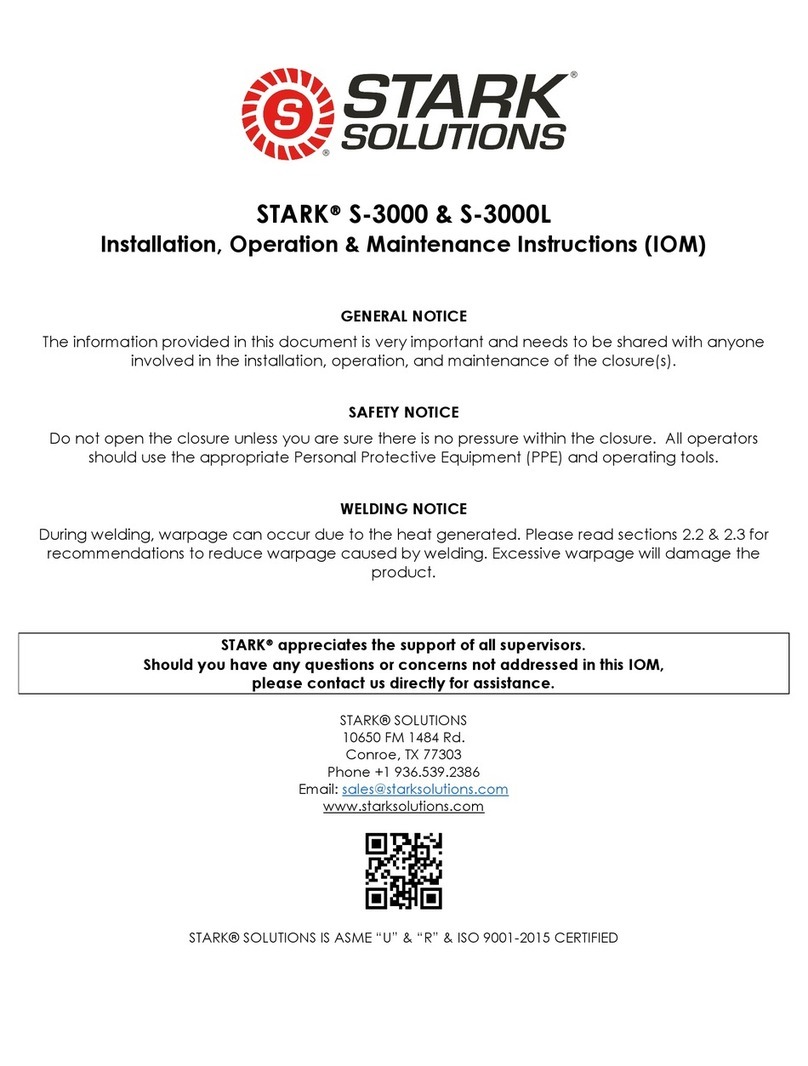
Stark
Stark S-3000 Installation, operation & maintenance instructions
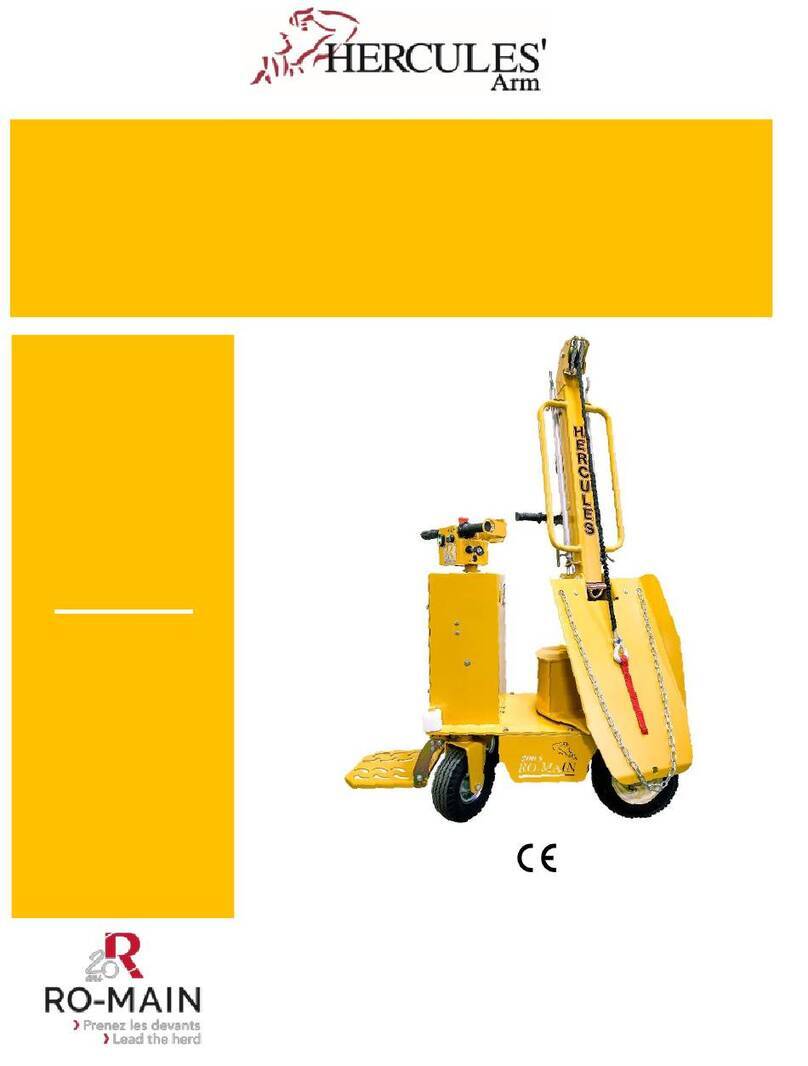
Ro-Main
Ro-Main HERCULES' Arm 200S user manual
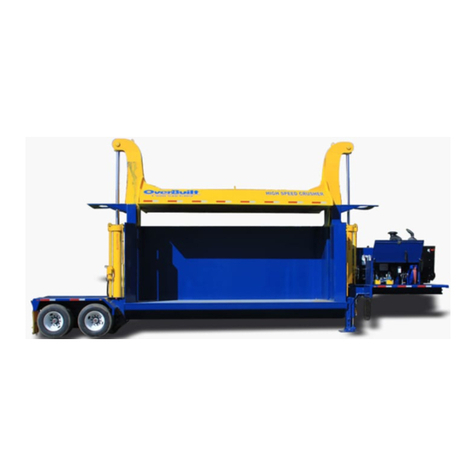
OverBuilt
OverBuilt 10 Operating and safety manual
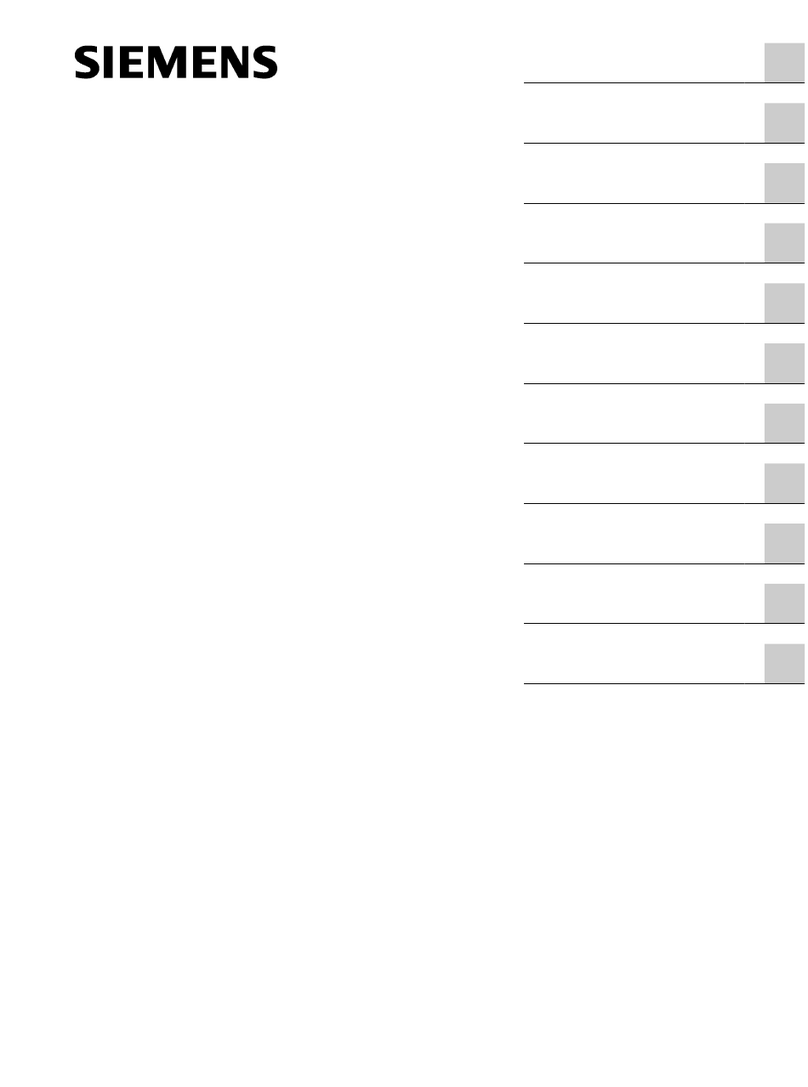
Siemens
Siemens SIMATIC NET SCALANCE LPE9413 operating instructions
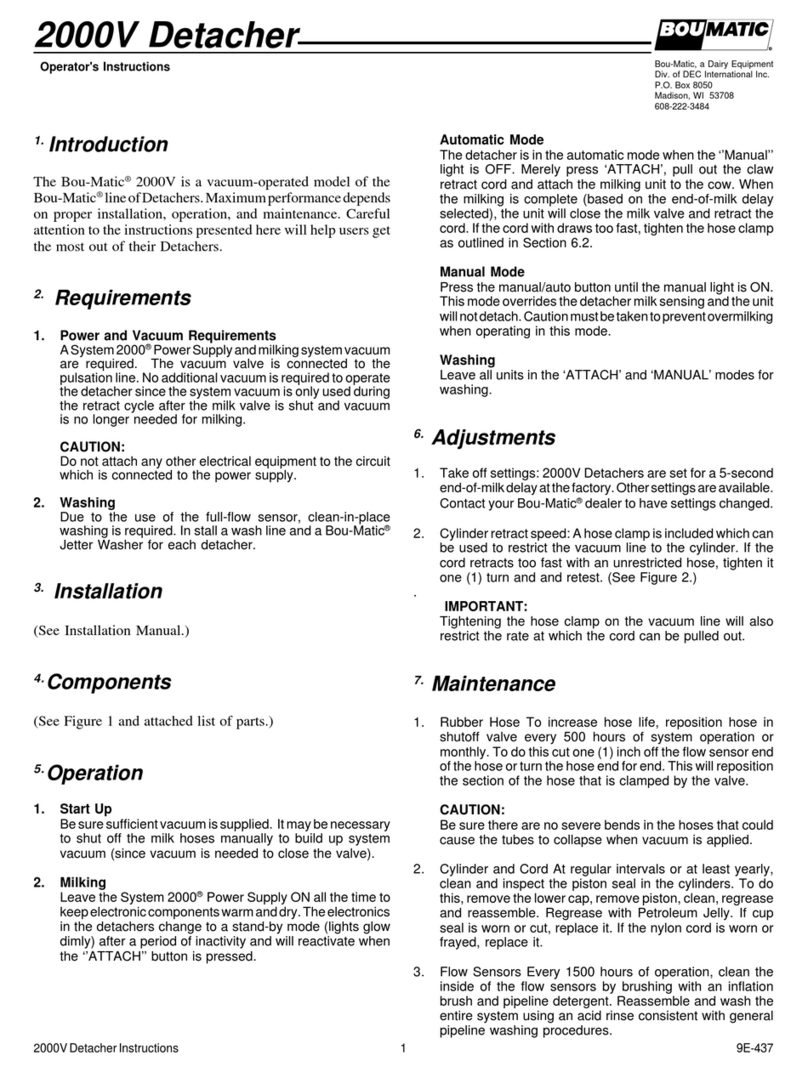
DAIRY EQUIPMENT
DAIRY EQUIPMENT Bou-Matic 2000V Operator instructions
